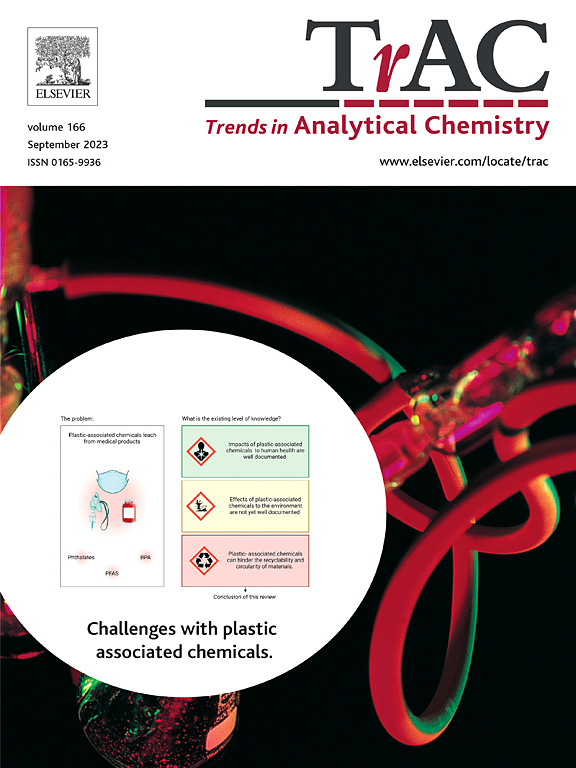工程正反馈的核酸电路生物传感器:设计与应用
IF 12
1区 化学
Q1 CHEMISTRY, ANALYTICAL
引用次数: 0
摘要
正反馈是指系统的输出信号向其输入信号重定向,并按同一方向叠加,引起渐进放大的过程。将正反馈回路集成到生物传感器设计中已成为有效提高灵敏度的有力策略,使痕量生物标志物检测成为可能。最近的进展是应用前沿技术,如DNAzymes、核酸修饰酶和CRISPR/Cas系统,在核酸电路生物传感器中设计正反馈回路,具有卓越的检测能力、成本效益和鲁棒性。本文首先阐述了正反馈驱动信号放大的机理,解构了正反馈核酸电路生物传感器的设计原理。然后系统地回顾有代表性的研究,突出设计创新并比较它们的表现。最后,讨论了当前面临的挑战和未来的发展方向。本文旨在阐明正反馈生物传感器的设计逻辑,为下一代检测性能更高的生物传感器的发展提供启示。本文章由计算机程序翻译,如有差异,请以英文原文为准。
Engineering positive feedback in nucleic acid circuit Biosensors: Design and applications
Positive feedback refers to a process in which a system's output signal redirected to its input and superimposed in the same direction, causing progressive amplification. Integrating positive feedback loops into biosensor design has become a powerful strategy for efficient sensitivity improvement, enabling trace biomarkers detection. Recent advancements have applied cutting-edge technologies, such as DNAzymes, nucleic acid-modifying enzymes, and CRISPR/Cas systems, to engineer positive feedback loop in nucleic acid circuit biosensors with exceptional detection capability, cost-effectiveness, and robustness. This review first explained the mechanism of positive feedback-driven signal amplification and deconstructs the design principles of positive feedback nucleic acid circuit biosensors. It then systematically reviews representative studies, highlighting design innovations and comparing their performance. Finally, the current challenges and future directions were discussed. This review aims to clarify the design logic of positive feedback biosensors and inspire the development of next-generation biosensors with enhanced detection performance.
求助全文
通过发布文献求助,成功后即可免费获取论文全文。
去求助
来源期刊

Trends in Analytical Chemistry
化学-分析化学
CiteScore
20.00
自引率
4.60%
发文量
257
审稿时长
3.4 months
期刊介绍:
TrAC publishes succinct and critical overviews of recent advancements in analytical chemistry, designed to assist analytical chemists and other users of analytical techniques. These reviews offer excellent, up-to-date, and timely coverage of various topics within analytical chemistry. Encompassing areas such as analytical instrumentation, biomedical analysis, biomolecular analysis, biosensors, chemical analysis, chemometrics, clinical chemistry, drug discovery, environmental analysis and monitoring, food analysis, forensic science, laboratory automation, materials science, metabolomics, pesticide-residue analysis, pharmaceutical analysis, proteomics, surface science, and water analysis and monitoring, these critical reviews provide comprehensive insights for practitioners in the field.
 求助内容:
求助内容: 应助结果提醒方式:
应助结果提醒方式:


